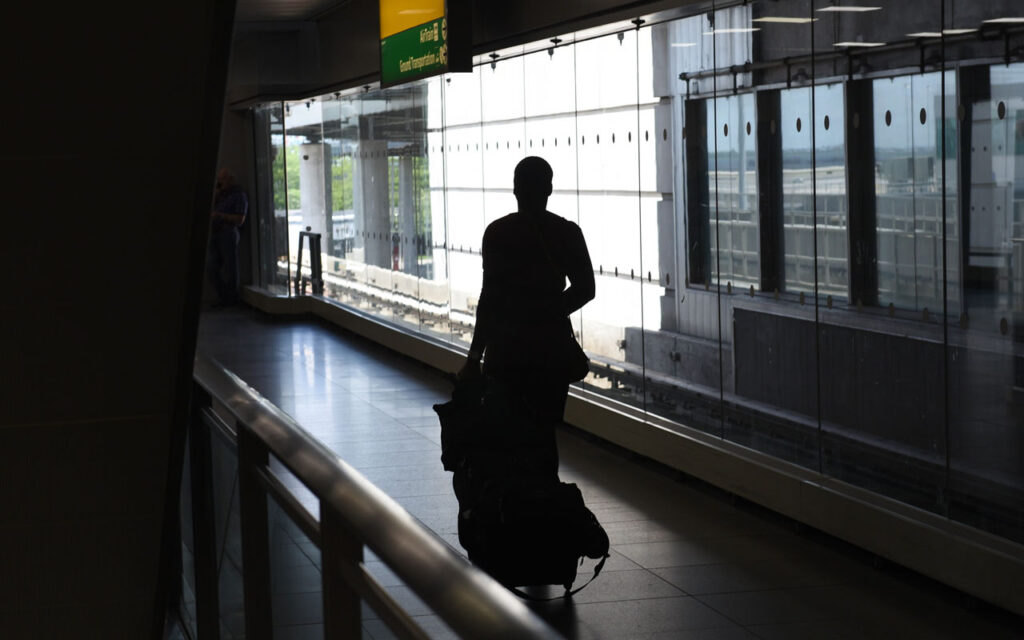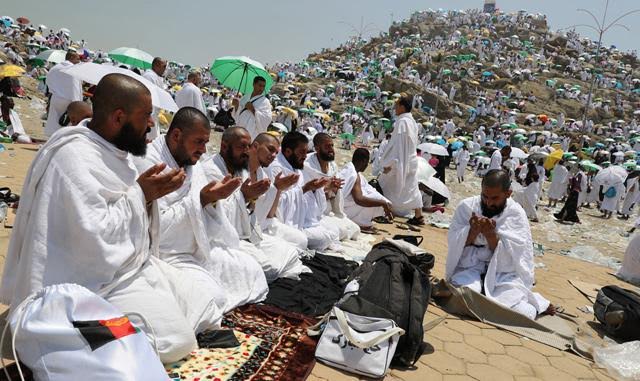
About two million pilgrims already in the Kingdom of Saudi Arabia will today move to Mina ahead of their convocation on Arafah tomorrow.
The five-day exercise which begins with mass movement of pilgrims to the canopy settlement about six kilometers away from Makkah symbolises the beginning of hajj rites.
Hajj is the last among the five pillars of Islam, an obligatory act of worship for all Muslims who have the financial and physical strength to undertake the journey. Observing the spiritual exercise is a divine act of servitude to Allah (SWT) Muslim faithful would constantly yearn to attain.
The rites essentially designated around the sacred places of Mina, plain of Arafat, Muzdalifah, and Jamrah in the outskirts of the city of Makkah, are being performed between 8th and 12th of lunar month of Dhul-Hijjah which correspond, this year, to 14th and 18th of June, 2024.
While keeping safe under the makeshift tents in Mina, pilgrims will pass the first night (Friday) in their state of Ihram (two pieces of white garment) in solemn preparation for staying on the plain of Arafat.
The movement to Arafat from Mina begins immediately after the dawn (Subh) prayer tomorrow (Saturday, June 15), where a single but largest assembly of pilgrims globally stands on Mount Arafah to answer the divine call of Prophet Ibrahim.
At Arafat, pilgrims have the rare privilege to seek God mercies, cleansing of their shortcomings and hopeful to be granted the gift of paradise in the hereafter, the ultimate reward and goal for sincere devotion.
Done with their supplications before sunset, pilgrims will subsequently continue with the next stage of their journey to Muzdalifah, a vast land space near the city of Mina, where pilgrims retire to pass the second night, observe obligatory prayers of Mogrib, Ishaa’i as well as Subhi on Sunday morning (day of sacrifice) before dispersing to Jamrah to cast their pebbles at the devil. The scene at Jamrah represents the symbolic reflection of the encounter between Prophet Ibrahim and the accursed satan, when the devil attempted to persuade Prophet Ibrahim to ignore the command of Allah to offer his son, Ishmael for sacrifice.
After completing the stone cast, pilgrims have the option of either move to Makkah to perform Tawaf al-Ifadah as well as the Sa’y between Safa and Marwa or returning to their tents in Mina and spend another two days to complete the stoning at Jamrah and thereafter, proceed to Makkah for Tawaf and Sa’y. Whatever option is adopted, the restrictions imposed by the donning of Ihram will be partially lifted on Sunday after the stoning, followed by slaughtering of animal and shaving of head.
Meanwhile, the Saudi Arabia authorities have completed all necessary arrangements around the three sacred sites to ensure pilgrims comfort and minimize health hazard. For instance, 45,600 additional air conditioners have been installed at various designated tents at Mina to increase the capacity of cooling system against the scorching temperature in the city.
The National Hajj Commission of Nigeria (NAHCON) has urged Nigerians back home to caution their relatives on pilgrimage to keep safe against life-threatening weather condition. The commission’s appeal came as temperature conditions were estimated above 50 degrees celsius in the coming days pilgrims will begin the real rites.
“We would like to advise the relatives of pilgrims back home in Nigeria to draw attention of their loved ones on hajj to avoid the scorching sun in Saudi Arabia. This is very important because the heat-wave from the high temperature is deadly.
“And the tense condition can move from heat exhaustion to heat stroke when the body temperature can go as high as 40 degrees. This condition can suddenly lead to pilgrim’s collapse and sending the victim into coma and subsequently lead to death”, NAHCON head of medical mission in Makkah, Dr Abubakar Adamu Ismail gave the warning.
He however assured of adequate preparation to confront any emergence. “Now, we have prepared members of the medical team about heat stroke and heat exhausting, major health complications that maybe imminent during activities at Mina, Arafat and other sacred sites.
“However, we have noticed improved arrangements by Saudi authorities to make pilgrims comfortable at the sacred places talking of availability of cooling system under each of the wide and spacious tent.
“Secondly, the provision of transport system that will convey pilgrims from each point to the next destination is commendable. From Makkah to Mina, to Arafat, down to Muzdalifah and back to Mina.
“The buses are designated state by state. At every point, there are dedicated tents provided to safeguard the health condition of pilgrims. With this enablement, we foresee less complication and health hazard this year than ever before at the sacred places where hajj rituals hold,” Dr Ismail added.
In addition, the Kingdom deployed water-tight security against infiltration of unwanted pilgrims at the sacred sites. Essentially, the Saudi Ministry of hajj and Umrah introduced Nusuk application to capture all registered and duly authorized pilgrims.
With the microchip-coded Nusuk card, Saudi Arabia Ministry of Hajj has finally found solutions to check the invasion of Mina, Arafat and Muzdalifah by unauthorized pilgrims.
Aside the Nusuk, Saudi government has introduced a drone technology to detect chemical gas and radiation that can cause accidents and explosion around the sacred sites.
Muhammed Hijasy, a civil engineer told The Guardian during one of the media exhibitions, that the new technology designed by Saudi Arabia civil defense authority under the Ministry of Interior is equipped to ensure maximum safety of pilgrims on Hajj and Umrah.













